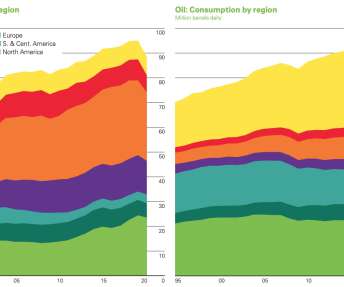EIA expects record global petroleum consumption in 2024, with lower crude oil prices
Green Car Congress
JANUARY 11, 2023
EIA expects crude oil prices to decrease through 2023 and 2024, even as petroleum consumption increases, largely because growth in crude oil production in the United States and abroad will continue to increase over the next two years. Areas of uncertainty include Russian oil supply and OPEC production.





















Let's personalize your content